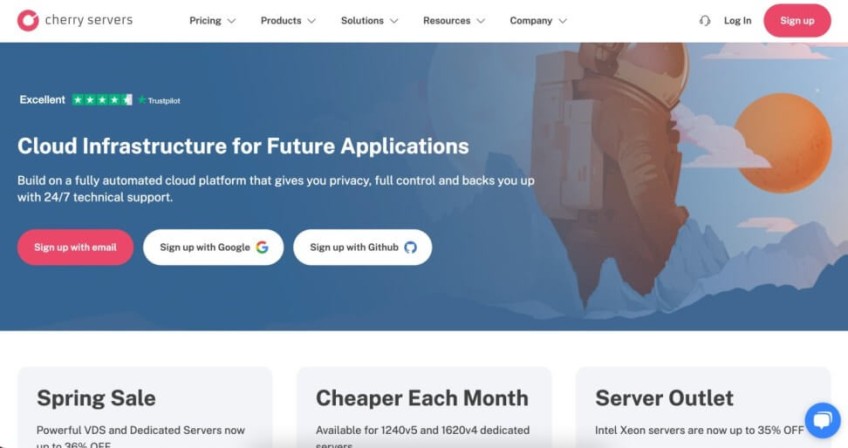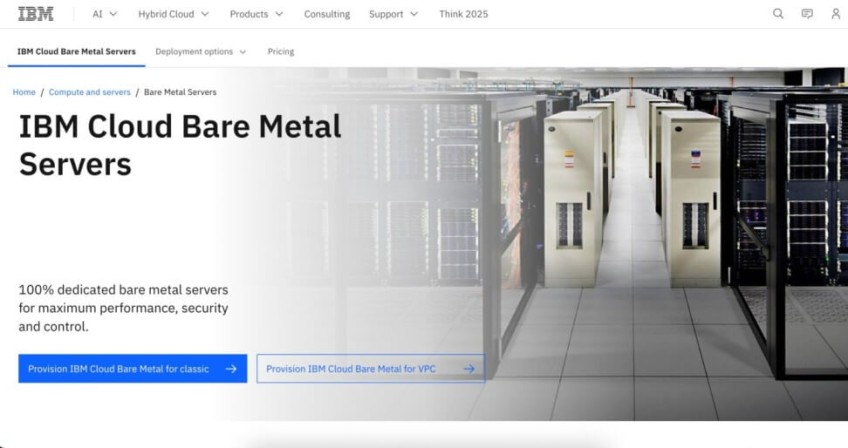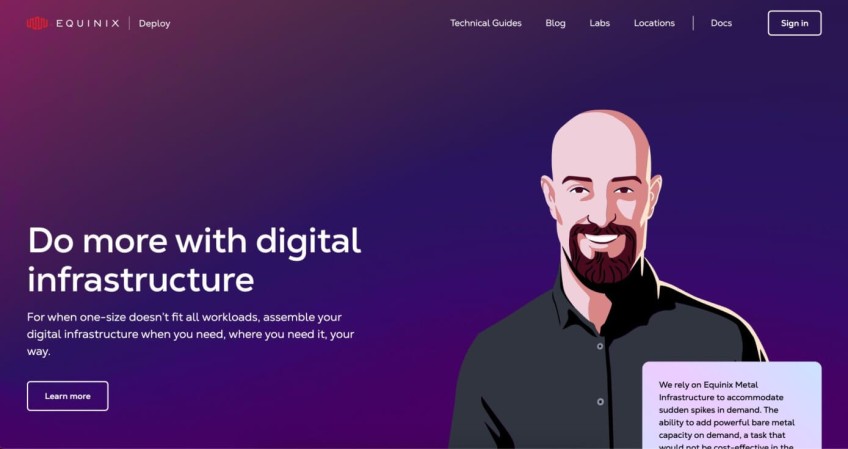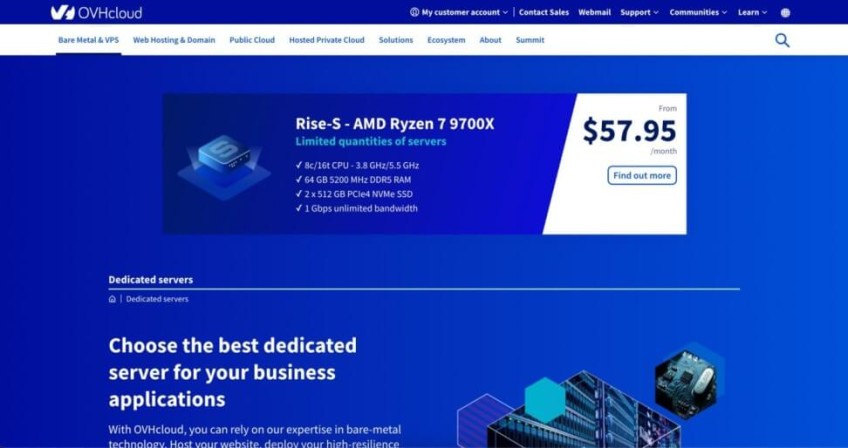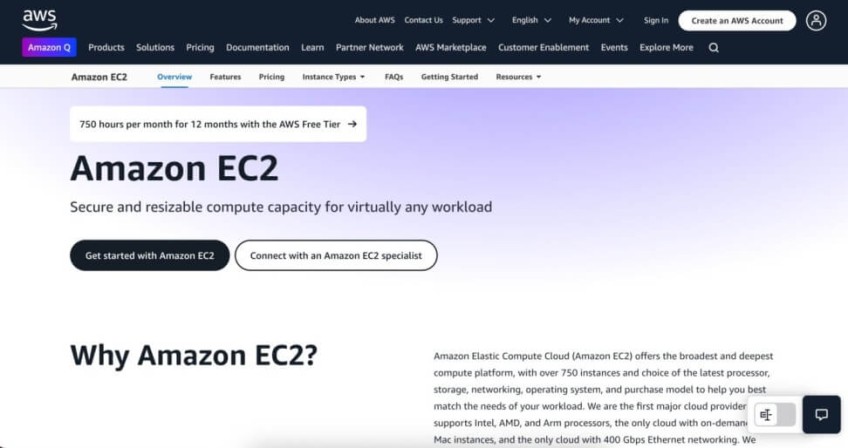What is a Bare Metal Server and How Does it Work?

Virtual servers have become a standard choice for deploying applications. Most providers offer simple setup processes, with ready-to-use environments that can be launched in minutes. This level of convenience works well for many workloads. However, performance can be inconsistent, and low-level control is limited as a result of shared hardware.
Bare metal servers address these issues by giving you full access to a physical server. There is no virtualization layer, no shared components, just one system, completely under your control. In this article, we will explain what a bare metal server is, how it compares to other hosting options, and when it makes sense to choose it.
#What is a bare metal server?
Some projects demand more than what shared or virtual servers can offer. They need reliable performance, full control, and dedicated resources that are not affected by other users. That is exactly what bare metal servers are built for.
A bare metal server is a physical machine assigned to a single user, with no virtualization layer in place. The operating system runs directly on the hardware, giving full and uninterrupted access to compute, memory, storage, and network resources. Since no hypervisor is involved, there is nothing abstracting or sharing those resources with other users.
Once deployed, the server can be configured from the ground up, starting with the choice of operating system, followed by any custom environments or applications. Because the server is not shared, there are no external workloads competing for resources, and no abstraction layer limiting how the system can be managed.
Deploy and scale your projects with Cherry Servers' cost-effective dedicated or virtual servers. Enjoy seamless scaling, pay-as-you-go pricing, and 24/7 expert support—all within a hassle-free cloud environment.
#Bare metal server benefits
Bare metal servers offer several advantages that make them a strong choice for certain workloads. Here are some of them:
#Full hardware access
With a bare metal server, you are in direct control of the hardware. There is no virtualization layer getting in the way, so what you install runs straight on the machine. You can tweak low-level settings, change the OS, and fine-tune the system to do exactly what you need it to do.
#No shared resources
You are the only one using the server, so there is no one else competing for resources. That means no surprise slowdowns because another user is running a heavy workload. Everything stays predictable, which matters when your app needs steady performance.
#Consistent performance
With no other workloads competing for resources, performance stays stable. This matters when running systems that need to respond quickly and handle data without delays, like databases, real-time applications, or analytics pipelines.
#Hardware customization
With bare metal, you are free to choose the hardware you actually want. You can pick the processor, memory, storage, and network setup that fits your project, instead of being stuck with whatever comes in a standard plan.
#Optimized for demanding components
If your setup needs powerful hardware, like GPUs, NVMe drives, or custom RAID, you can run it directly on bare metal. With no virtualization layer involved, these components can perform without the overhead or constraints typically introduced by shared environments.
Also read: When to use bare metal servers
#Bare metal vs other server types
Bare metal servers are often grouped with other hosting options, but they are not the same. On the surface, they might look similar to virtual or dedicated servers, but the way they work and what they are good for is very different.
#Comparison
The table below highlights how bare metal servers compare with other common server types across key features. It provides a quick view of where each option stands in terms of performance, control, scalability, and resource access.
| Feature | Bare Metal Server | VPS | Dedicated Server | Cloud Instance |
|---|---|---|---|---|
| Resource Access | Full, exclusive | Shared | Full, exclusive | Shared |
| Virtualization | None | Yes (Hypervisor) | None | Yes (Hypervisor) |
| Performance | Consistent | Varies with load | Consistent | Can vary |
| Provisioning Speed | Moderate | Fast | Often slower | Instant or near-instant |
| Scalability | Manual or limited | Moderate | Manual | High |
| Customization | Full hardware control | Limited to OS and apps | Full hardware control | Limited to provider setup |
#Bare metal vs virtual private server (VPS)
A virtual private server runs on shared hardware. Multiple VPS instances are hosted on a single physical machine and managed by a hypervisor. While each VPS behaves like an independent system, it shares CPU, memory, and storage with others on the same host.
Bare metal servers, on the other hand, give you the full machine. There is no hypervisor, and you do not share resources with anyone else. This means better performance consistency, more control at the hardware level, and no interference from neighboring workloads.
#Bare metal vs dedicated server
Bare metal and dedicated servers are both physical machines assigned to a single user, so at a glance, they seem the same. However, the way they are managed can be quite different. Dedicated servers often come with fixed hardware and have traditionally required more manual setup. That said, many modern dedicated server providers now offer automation and management tools that make provisioning and reconfiguration much faster and easier than they used to be.
Meanwhile, bare metal servers go a step further by making automation the default. Most bare metal cloud providers support API-based deployment, infrastructure-as-code tools, and fast custom configurations. This makes it easier to integrate them into cloud-native workflows. So while both options give you full control of the hardware, bare metal is often the better fit when you need that control combined with speed and flexibility.
#Bare metal vs cloud instances
Cloud instances are virtual machines that run on shared hardware. You can get one running in minutes, and it is easy to add more if your workload grows. Most providers let you launch them in minutes and manage everything from a simple dashboard or API.
But because you are sharing the hardware with other users, performance can sometimes fluctuate, especially during peak times. You also do not get full access to the system, since the virtualization layer limits what you can tweak or configure at a low level.
Bare metal servers give you the entire machine to yourself. There is no hypervisor, no shared resources—just one physical server running only what you put on it. That means consistent performance and full control over the system. You can tune the hardware, access deeper settings, and build around your specific needs. The downside is that bare metal is not as instantly scalable as cloud instances. However, if your priority is steady performance and full control, it is a better option.
While each server type has its place, bare metal stands out when performance, control, and isolation are priorities. Understanding these differences helps you choose the right setup for your specific needs.
Also read: Bare metal server cost guide
#When to use a bare metal server
A bare metal server is not always necessary. But when performance or control really matters, it can make a big difference. Let us look at a few cases where going with bare metal actually makes sense.
#High-performance computing (HPC)
Some workloads push hardware to the edge, like training machine learning models, running scientific simulations, or processing large datasets. These jobs need steady performance and full use of the system’s resources. Bare metal servers are a solid choice here because you are not sharing the machine with anyone else, and there is no virtualization layer slowing things down.
#Video rendering and game servers
Tasks like 3D rendering or hosting large multiplayer games require stable performance and access to high-end hardware. Bare metal allows you to run these workloads without interference or resource contention.
#Regulated industries
In sectors like healthcare or finance, compliance requirements may call for full hardware isolation, specific encryption standards, or strict control over data handling. Bare metal helps meet these demands by removing the shared layers found in virtualized environments.
#Workloads that must be isolated
Some applications are sensitive to fluctuations in resource availability or must run in complete isolation for security reasons. A bare metal server guarantees that no other tenants share your environment, giving you full control from the operating system down to the hardware.
In these cases, the reliability and control that bare metal offers can make a meaningful difference. It is not always the default choice, but when the need is clear, it delivers exactly what is required.
#Challenges of bare metal servers
While bare metal servers offer strong advantages, they also have some limitations. These limitations are important to consider when deciding if this setup is the right fit.
#Longer provisioning time
Bare metal servers are physical machines, so they often take longer to set up than virtual instances. Some modern providers have reduced this delay through automation and APIs, but the process is still not as fast as spinning up a cloud VM.
#Less elasticity
Scaling up or down on demand is one of the main strengths of cloud environments. Bare metal does not offer that same flexibility. Once the server is running, adjusting resources usually requires manual changes or provisioning new hardware.
#Higher cost when idle
Bare metal servers do not scale down when you are not using them. You are paying for the whole machine, all the time—even if your workload is light or only runs occasionally. That can get expensive if your usage goes up and down or stays low most of the time.
These challenges do not make bare metal a poor choice, they just show that it works best when the server is put to full use.
#Bare metal server providers
Bare metal servers are offered by various providers, each catering to different needs and preferences. Below are some notable options:
#Cherry Servers
Cherry Servers offers bare metal machines that are quick to set up and easy to manage. You can pick a prebuilt instant server and start using it in about 15 minutes, or request a custom build if you need specific hardware for your project. They support demanding workloads like AI, machine learning, and high-performance computing, with options like dedicated GPUs, fast NVMe storage, and powerful CPUs.
You can pay by the hour or by the month, depending on how long you need the server. If you want to automate things, their API makes it easy to set up and manage your infrastructure. With multiple data center locations and a support team that actually responds when needed, Cherry Servers is a solid choice when you need dedicated hardware without the usual complications.
#IBM Cloud bare metal servers
IBM provides bare metal servers that are fully customizable and available across global data centers. They support both hourly and monthly billing, catering to enterprise settings where performance, security, and compliance are priorities. IBM’s servers are often used for workloads requiring specific hardware configurations, such as AI model training or high-throughput databases.
#Equinix Metal
Equinix Metal offers bare metal servers using a developer-first approach. Servers can be provisioned through APIs or infrastructure-as-code tools, integrating well with modern DevOps workflows. This makes them suitable for teams building edge applications, distributed systems, or hybrid cloud platforms needing direct infrastructure control.
Note! Equinix Metal end of life is scheduled for June 2026, with all services fully discontinued by then. Find the best service to migrate to. Check what makes Cherry Servers bare metal the best Equinix Metal alternative to consider.
#OVHcloud
OVHcloud provides cost-effective bare metal servers, appealing to startups or small businesses desiring dedicated hardware without high costs. These servers are commonly used for hosting game servers, backup systems, or general-purpose applications requiring full isolation at a lower price point.
#AWS EC2 bare metal instances
With EC2 bare metal, you get full access to the physical hardware, but still work within the AWS environment you are already used to. It is a good option when you need low-level control, like running a custom hypervisor or migrating an app that was never built for the cloud. Teams often use it when they want the power of bare metal without giving up the tools and integrations that come with AWS.
Each provider has its strengths. The right choice really comes down to what you are building and what matters most for your setup.
#Conclusion
Bare metal servers are not for every project. However, when you need full control and consistent performance, they are the better choice. They are straightforward, reliable, and give you exactly what you expect—no shared layers, no surprises.
If your work involves performance-heavy tasks or systems that need to stay reliable under pressure, bare metal gives you the control to manage every part of the environment. It removes the uncertainty that comes with shared infrastructure and keeps your setup consistent from the ground up.
Get 100% dedicated resources for high-performance workloads.

